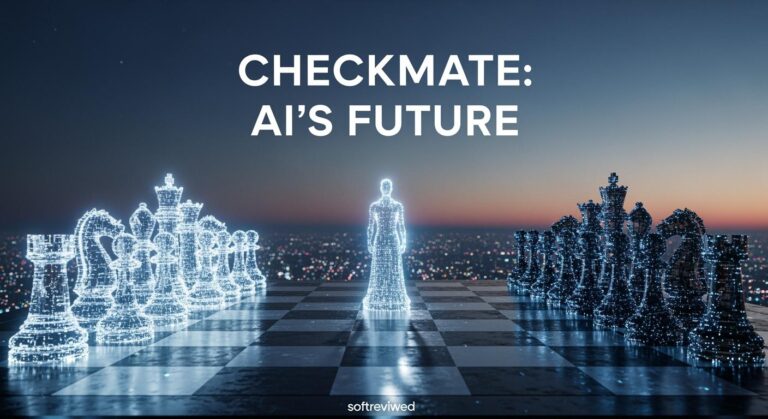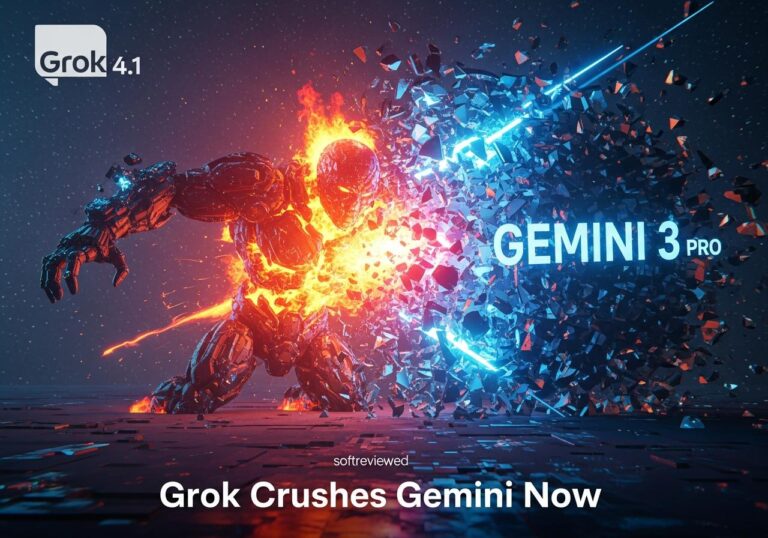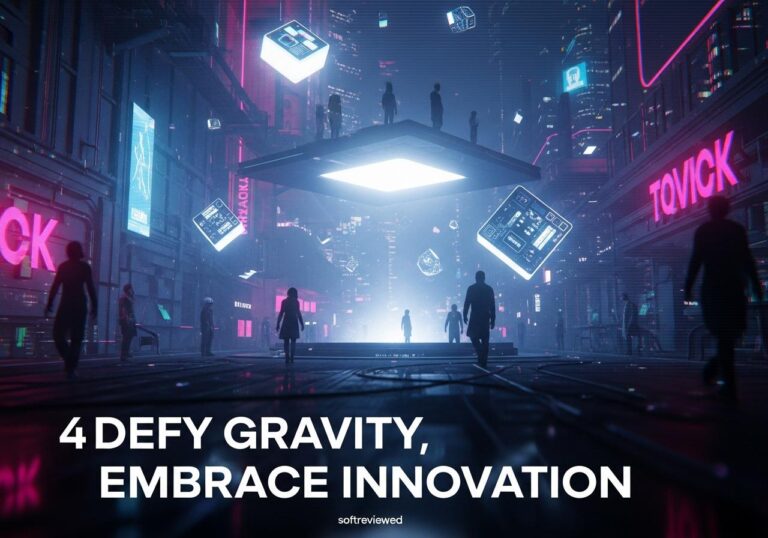xAI’s Strategic Talent Acquisition
How Elon Musk’s xAI is reshaping the AI talent landscape in the race toward AGI
🔍 Strategic Talent Recruitment
xAI has executed targeted hiring from Tesla, Meta, and other AI powerhouses to accelerate AGI research and development. The company has specifically focused on engineers with experience in large-scale AI systems and infrastructure. [1][2][3]
⚙️ High-Profile Engineer Onboard
David Lau, former Tesla VP of Software Engineering, has joined xAI along with other senior engineers to develop scalable AI architecture. This team brings critical expertise in building robust systems capable of handling massive computational demands. [2][3][4]
⚔️ AI Talent War Escalation
Meta has intensified its recruiting efforts, while OpenAI has recalibrated its compensation packages to retain top talent. This escalating competition for AI specialists has created unprecedented salary inflation in the sector, with some specialists commanding seven-figure packages. [2][4] This fierce battle for qualified professionals is prompting companies to keep a close eye on ai talent war updates, as they adopt innovative strategies to attract and maintain their workforce. Moreover, the increasing demand has led many businesses to invest in training programs aimed at upskilling their current employees. As a result, organizations are also exploring collaboration opportunities with universities and research institutions to cultivate the next generation of AI experts.
⚖️ Musk-OpenAI Legal Tensions
Recruitment activities are occurring against a backdrop of ongoing legal disputes between Elon Musk and OpenAI regarding the organization’s mission and competitive practices. These tensions have added complexity to talent acquisition strategies across the industry. [2]
🚀 Infrastructure Moonshots
xAI is prioritizing ambitious infrastructure projects like Stargate, designed to bridge the gap between theoretical AI research and practical implementation. These initiatives require specialized engineering talent with experience in computational efficiency and hardware optimization. [2]
🤝 Broader Strategic Moves
Beyond recruitment, xAI is forming strategic partnerships, including with Microsoft, to expand AI education access and build a pipeline for future talent. These collaborations aim to address the growing skills gap in advanced AI development. [1]
For weeks, the narrative has been one of a relentless raid. Meta, armed with a seemingly bottomless war chest and the allure of its charismatic AI chief Yann LeCun, has been systematically poaching top talent from OpenAI. The headlines suggested a brain drain that could potentially stall the ChatGPT creator's momentum. But just when it looked like OpenAI was on the defensive, the company has made a powerful counter-move. In a strategic strike, OpenAI has recruited a quartet of elite engineers from its biggest rivals—Tesla, Meta, and Elon Musk’s own xAI.
This isn't just about filling empty seats. These hires are a direct injection of expertise into what might be OpenAI’s most critical long-term project: the Stargate supercomputer and the backend infrastructure required to power the next generation of artificial intelligence. This move signals that the AI talent war has escalated, moving beyond model researchers to the master builders of the digital world—the infrastructure and scaling engineers who are the new kingmakers in the race to Artificial General Intelligence (AGI).
We're going to break down who these new hires are, why their skills are so valuable, and what this strategic power play means for the simmering rivalries between Sam Altman, Elon Musk, and Mark Zuckerberg. Get ready, because the competition for the architects of our AI future is heating up. 🚀
The New Guard: Meet OpenAI's Reinforcements
So, who are these engineers causing such a stir? They aren't just rank-and-file coders; they are seasoned leaders and architects who have built some of the most impressive computing systems in the industry. Their arrival at OpenAI is a statement of intent.
According to an internal memo from co-founder Greg Brockman, the new lineup includes some serious heavy-hitters:
- David Lau: Formerly the Vice President of Software Engineering at Tesla, Lau is a major catch. At Tesla, he was instrumental in developing the software that underpins its vehicles and autonomous driving efforts. He now steps into a crucial role at OpenAI, leading the backend systems team. Think of him as the new chief architect for the digital engine that runs everything behind the scenes.
- Uday Ruddarraju & Mike Dalton: This duo comes directly from Elon Musk's AI venture, xAI. Their claim to fame? They were key figures in building "Colossus," xAI's massive supercomputer powered by an astounding 200,000 NVIDIA GPUs. Now, they bring that experience to OpenAI's Stargate team, tasked with building an even more powerful computational behemoth. Their hiring is a direct blow to xAI's infrastructure ambitions.
- Angela Fan: Joining from Meta AI, Fan's recruitment is particularly symbolic. It comes right as Meta has been celebrating its own success in luring away OpenAI researchers. Fan, who also joins the scaling team, represents a reversal of that trend, proving that the talent flow isn't a one-way street.
These hires are not about improving ChatGPT's conversational skills tomorrow. They are about building the foundation for whatever comes after GPT-4, GPT-5, and beyond. They are the people who will build the digital city where future AIs will live.
A Strategic Counter-Punch in the AI Arms Race
Let's not mince words: this was a calculated and necessary response. For the past few months, Meta has been on a hiring rampage. Reports indicate at least seven researchers have departed OpenAI for Meta, tempted by massive compensation packages and the promise of more open-source research. This led to speculation about whether OpenAI was losing its magnetic appeal for top-tier talent.
These new hires from Tesla, xAI, and Meta itself serve as a powerful rebuttal. They demonstrate that OpenAI remains a top destination for engineers who want to work on the most ambitious AI infrastructure projects in the world. It’s a clear message to the industry: don't count us out.
Sam Altman and Greg Brockman are showing that they can play offense as well as defense. While Meta may be winning some skirmishes for research talent, OpenAI is fortifying its core—the scaling and infrastructure teams that are absolutely essential for training the frontier models that define the cutting edge of AI. This is less about a single battle and more about reinforcing the castle walls for a long and drawn-out war.
Stargate: The Trillion-Dollar Supercomputer Fueling the Fire
To understand the gravity of these hires, you need to understand Stargate. This isn't just another server farm; it's one of the most ambitious and secretive projects in Silicon Valley today.
Stargate is the code name for OpenAI's plan to build a data center and supercomputer of unprecedented scale and power. While details are scarce, reports suggest a multi-phase project culminating in a machine that could cost upwards of $100 billion. Its purpose? To provide the colossal amount of computing power needed to train AI models that are orders of magnitude more powerful than anything we have today.
Why is this so important?
📌 Training Frontier Models: Creating models like GPT-4 requires immense computational resources. Future models will require exponentially more. Stargate is designed to meet that demand.
📌 The Path to AGI: OpenAI believes that massive-scale computation is a key ingredient on the path to creating Artificial General Intelligence. Stargate is the physical manifestation of that belief.
📌 A Competitive Moat: Owning and operating a supercomputer of this scale would give OpenAI a significant advantage over competitors who rely on cloud providers or smaller-scale infrastructure.
Hiring the engineers who built xAI’s Colossus supercomputer is like a sports team signing the architects of their rival's stadium. It gives OpenAI not only the talent to build its own grand vision but also invaluable insight into a competitor's playbook.
The Musk-Altman Rivalry Pours More Fuel on the Fire

The recruitment of talent from Tesla and xAI adds another layer of drama to the already tense relationship between Elon Musk and Sam Altman. Once allies who co-founded OpenAI, they are now fierce rivals with deeply divergent views on the future of AI.
Musk has been openly critical of OpenAI's partnership with Microsoft and what he perceives as a shift from its non-profit mission to a profit-driven one. He even filed a lawsuit against the company earlier this year, alleging a breach of its founding agreement.
Poaching key engineers from two of Musk’s flagship companies—Tesla and xAI—is more than just a business transaction; it’s a symbolic jab. It demonstrates OpenAI’s continued pull and prestige, even in the face of public criticism from one of technology's most powerful figures. For Musk, losing top engineers who were building the core infrastructure for his AI ambitions to his primary rival has to be a significant setback. This move will almost certainly intensify the public and private feud between the two billionaires.
Why Backend Engineers Are the New Rockstars of AI
For years, the spotlight in AI has been on the researchers—the brilliant minds designing new neural network architectures and training methodologies. While they remain crucial, the center of gravity is shifting. The new rockstars are the scaling and infrastructure engineers.
Think of it like this: an AI model researcher is like a star architect who designs a groundbreaking skyscraper. But the scaling engineer is the master builder who figures out how to actually construct it—how to source a million tons of steel, manage a crew of thousands, and ensure the foundation can support the structure.
Without world-class scaling and backend teams, even the most brilliant AI model is just a blueprint. These are the people who:
✅ Orchestrate Massive GPU Clusters: They manage and optimize tens of thousands of GPUs to work in perfect harmony.
✅ Build Resilient Systems: They ensure the infrastructure can handle the immense strain of training models for weeks or months without failure.
✅ Optimize Data Pipelines: They create the systems that feed unimaginable amounts of data into the models efficiently.
As one industry expert noted, "The war for AI supremacy won't be won by algorithms alone. It will be won by the teams who can build and scale the computational infrastructure faster and more efficiently than anyone else." This is why OpenAI is investing so heavily in this talent. You can explore the types of roles they are hiring for on the OpenAI Careers page.
The Great AI Brain Drain: A Shifting Battlefield
The competition for talent is a fluid, high-stakes game of chess. While a complete picture is difficult to paint, the recent moves highlight the primary contenders and the flow of talent between them.
| Company | Recent Gains | Recent Losses | Strategic Focus |
|---|---|---|---|
| OpenAI | 🚀 Key infrastructure & scaling leads from Tesla, xAI, Meta. | 🔻 Several researchers to Meta. | Stargate & AGI: Building massive-scale proprietary infrastructure. |
| Meta AI | ✅ Significant research talent from OpenAI and Google. | 🔻 Scaling engineer to OpenAI. | Open-Source Dominance: Attracting talent with open models and compute access. |
| Google DeepMind | 🧠 Retaining and hiring top researchers for its Gemini models. | 🔻 Some talent poached by aggressive startups and rivals. | Integrated AI: Leveraging Google's vast ecosystem and data. |
| xAI | 💡 Founded with top talent from across the industry. | 🔻 Key supercomputer engineers to OpenAI. | Challenger: Building a powerful alternative to established players. |
This table shows that while Meta has scored points in acquiring research talent, OpenAI's latest moves are a strategic strike at the foundational layer of AI development—a layer where expertise is arguably even rarer and more difficult to replace. As OpenAI continues to bolster its team with top-tier talent, it sets itself apart from competitors like Meta, who may excel in quantity but struggle with the qualitative aspect of innovation. This strategic focus also positions OpenAI to leverage advanced techniques, such as google ai personality analysis, to create more nuanced and effective AI solutions. In an industry where depth of knowledge can dictate the pace of progress, OpenAI’s approach may well establish a new standard for excellence.
What This Means for the Road Ahead
So, where does this leave us? The AI talent war is clearly entering a new, more intense phase. It’s no longer just about who has the smartest researchers, but who can provide them with the most powerful tools. The hiring of Lau, Ruddarraju, Dalton, and Fan is a testament to this shift.
This escalation has several important implications:
- Infrastructure is the New Battlefield: The ability to build and manage massive supercomputers is now a primary competitive advantage. The fight for scaling engineers will become even more ferocious.
- Salaries and Perks Will Soar: As the demand for this specialized talent outstrips supply, compensation packages will likely reach astronomical levels, making it harder for smaller companies to compete.
- The Rich Get Richer: Companies with deep pockets like OpenAI, Meta, and Google are best positioned to fund both the massive salaries and the billion-dollar infrastructure projects, potentially leading to a consolidation of power.
This isn't just an internal Silicon Valley drama. The outcome of this talent war will directly shape the future of artificial intelligence. The teams being assembled today are the ones who will build the technologies that will redefine our world over the next decade.
The New Front Line in the AI Wars
OpenAI's decisive hiring blitz is a powerful reminder that the company is a formidable force in the tech world. It has weathered internal turmoil and external attacks, only to emerge with a renewed focus on its core mission: building the road to AGI. By poaching top-tier infrastructure talent from its biggest rivals, OpenAI hasn't just filled a few key positions; it has fired a loud and clear shot across the bow.
The message is simple: we are not just participants in the AI race; we are building the racetrack itself. As the dust settles from this latest skirmish, one thing is certain—the war for the architects of the future is far from over. In fact, it may have just begun.







